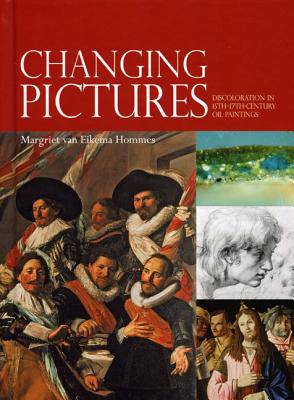
- Afhalen na 1 uur in een winkel met voorraad
- Gratis thuislevering in België vanaf € 30
- Ruim aanbod met 7 miljoen producten
- Afhalen na 1 uur in een winkel met voorraad
- Gratis thuislevering in België vanaf € 30
- Ruim aanbod met 7 miljoen producten
Changing Pictures
Discoloration in 15th-17th-Century Oil Paintings
Margriet Van Eikema Hommes
Hardcover | Engels
€ 187,45
+ 374 punten
Omschrijving
Today, 15th-17th-century oil paintings usually look different from the way they looked originally due to the ageing of the pigments and media used by the artist. While some areas of the painting may have become darker, others may have faded or even changed colour entirely. The present colour range and modelling in an old picture may deviate greatly from that which the painter intended. As this can have far-reaching consequences for our interpretation of an artist's pictorial, illusionistic and aesthetic intentions, it is crucial that both conservators and art historians are made aware of the optical changes in old pictures. Changing Pictures is the first extensive art historical study on the discoloration of old master paintings, concentrating on oil paintings from the 15th to the 17th centuries. The point of departure for this book is contemporaneous writings on oil painting technique and on the use of colour and light and shade in paintings - texts written by both professional and amateur painters, art lovers or connoisseurs, and ranging from manuscripts with succinct practical instructions to early published scholarly treatises which expound in detail the myriad aspects of the art of painting. In this book, the historical research has been conducted in parallel with a technical study of paintings and the artificial ageing of reconstructed traditional paints. This integrated approach provides new insight into the composition of the paints used by the old masters. It also reveals that both the degree and the nature of the discoloration can depend on a large number of material and technical variables, including the quality of the pigments, the type of binding medium and the painting technique. Historical writings also provide valuable understanding of the original colours and modelling of old paintings. By means of several examples of 'changed pictures', the author demonstrates how studies of the old texts - together with examinations of preparatory sketches/drawings, early copies of the discoloured paintings and our knowledge of the ageing of paint materials - enable us to deduce a painting's original appearance thereby gaining a better insight into the intentions of the artist.
Specificaties
Betrokkenen
- Auteur(s):
- Uitgeverij:
Inhoud
- Aantal bladzijden:
- 284
- Taal:
- Engels
Eigenschappen
- Productcode (EAN):
- 9781873132395
- Verschijningsdatum:
- 1/12/2006
- Uitvoering:
- Hardcover
- Formaat:
- Genaaid
- Afmetingen:
- 183 mm x 248 mm
- Gewicht:
- 889 g

Alleen bij Standaard Boekhandel
+ 374 punten op je klantenkaart van Standaard Boekhandel
Beoordelingen
We publiceren alleen reviews die voldoen aan de voorwaarden voor reviews. Bekijk onze voorwaarden voor reviews.










